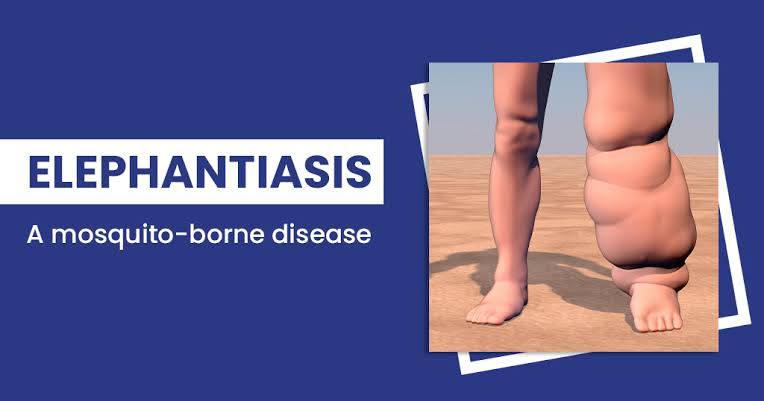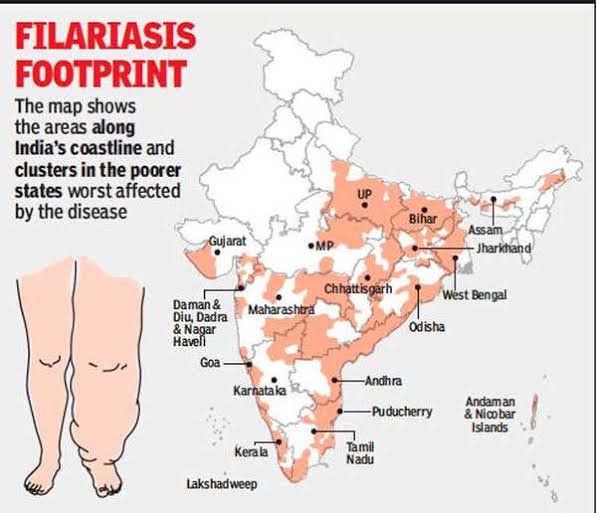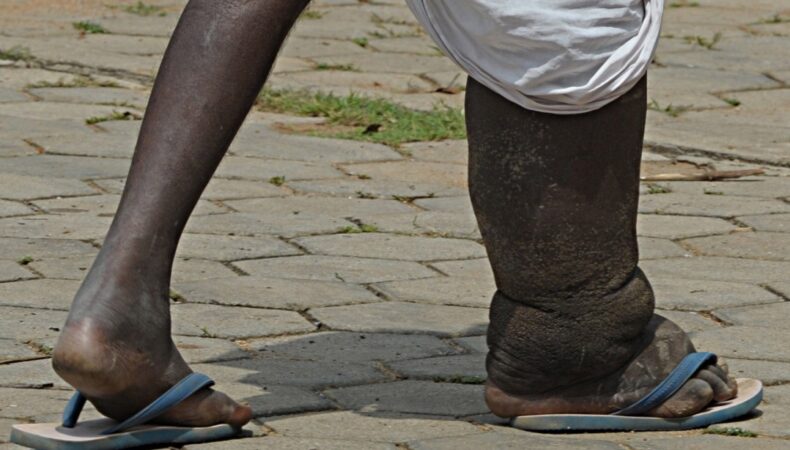
Lymphatic Filariasis (LF), commonly known as elephantiasis, is a painful and disfiguring parasitic disease caused by tiny worms spread through mosquito bites. It leads to abnormal enlargement of body parts, resulting in chronic pain and disability. India bears a significant burden of this disease, accounting for 40% of all global LF cases. Early detection and intervention play a crucial role in preventing further damage and reducing the suffering of affected individuals.
The Devastating Impact of Elephantiasis:

Lymphatic Filariasis (LF), also known as elephantiasis, is a debilitating disease that affects millions of people in tropical and subtropical regions worldwide. The disease is caused by microscopic worms called nematodes, transmitted to humans through the bites of infected mosquitoes. Once inside the body, these worms travel to the lymphatic system, causing inflammation and damage. The most visible manifestations of LF include lymphedema, leading to swollen limbs, and hydrocele, causing scrotal swelling. These symptoms not only cause excruciating pain but also result in profound disfigurement, leading to social stigma and perpetuating cycles of poverty and diminished quality of life for those affected.
Elephantiasis Risk in India:
India bears a heavy burden of lymphatic filariasis, accounting for a staggering 40% of all global LF cases. An alarming 740 million people in India are at risk of contracting this disease. The prevalence is higher in regions with poor sanitation and limited access to healthcare facilities, exacerbating the challenges faced by those affected.
The Role of Early Intervention:
Early detection and timely treatment are crucial in combating lymphatic filariasis. Detecting infections in their initial stages, before visible symptoms manifest, can prevent the disease from progressing to irreversible stages. By targeting infected individuals before the parasites spread to others through mosquito bites, early interventions also play a significant role in breaking the transmission cycle of LF.
Strategies to Eliminate LF:
To eliminate lymphatic filariasis as a public health problem, India adopts a comprehensive strategy consisting of three key pillars: mass drug administration (MDA), morbidity management, and disability prevention, and integrated vector management.
Mass Drug Administration:
Mass Drug Administration is a cornerstone of India’s strategy to eliminate LF. This approach involves distributing and ensuring the consumption of safe and effective drugs. A nationwide campaign was launched, with the first phase successfully completed in February. The second phase is set to begin on August 10, covering 82 districts across 8 states. Nearly all members of the community, except pregnant women, children below two years of age, and severely ill individuals, are eligible to take the administered drugs. It is essential for individuals of all age groups above two years to participate in MDA to effectively combat the disease.
Safety of Anti-Filarial Drugs:
The drugs used in MDA, such as Diethylcarbamazine (DEC), Albendazole, and Ivermectin, have a well-established safety record and have been used globally for over 50 years. While some individuals, especially those carrying microfilaria (parasites) in their blood, may experience mild side effects following drug consumption, such as fever, headache, body ache, vomiting, dizziness, rash, or itching, these side effects typically subside within a day without any medication. The benefits of these drugs in combating the targeted disease far outweigh the minimal side effects.
Conclusion:
Lymphatic Filariasis, commonly known as elephantiasis, presents a major health concern not only in India but also in other tropical regions. However, there is optimism for combatting this disfiguring disease through two essential approaches: early detection and mass drug administration. Detecting cases early allows for timely intervention, preventing the disease from advancing to more severe stages. Equally crucial is the distribution of drugs on a large scale, reaching vulnerable communities to reduce disease transmission and treat existing cases.
These efforts are not carried out in isolation; rather, they require the collective commitment of healthcare professionals, communities, and governments. The dedicated work of doctors, nurses, and medical staff is instrumental in diagnosing and treating affected individuals. Communities play a vital role by raising awareness about the disease, promoting hygiene practices, and taking proactive measures to prevent mosquito bites. Governments also play a significant part by prioritizing public health initiatives, investing in healthcare infrastructure, and collaborating with international organizations.
By uniting forces, we pave the way toward eliminating elephantiasis and improving the lives of millions of people afflicted by this disease. Together, we aspire for a future where elephantiasis no longer casts its shadow on the well-being of communities, but instead brings about a brighter and healthier tomorrow for all.













